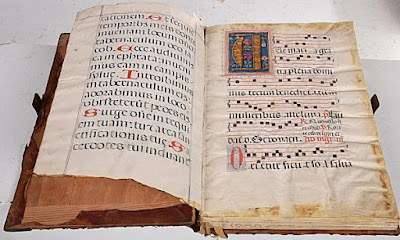[This midweek post comes from a long and growing list in my drafts folder]
My first job after leaving university was at Christie's, South Kensington (more-or-less next door to the building in which I was born, as I later discovered), where I worked in the Tribal Art Department [1]. It was the only time that I put my knowledge of Tribal Art to any use, and it introduced me to the fascinating world of art auctions and dealers.
William "Bill" Fagg (1914-1992), the legendary Africanist, was the Department's Consultant and was often in the office, so I had the pleasure of getting to know him before he died.
While searching JSTOR for somethign else, I came across a letter published by him [2], in which he relates that when he first did fieldwork in Africa in 1949, he had no specific training for it. But, he continues,
"I would here like to mention a qualification which I have for fieldwork -- though some would consider it a millstone around my neck. I mean a love of minutiae, nurtured during my studies in classical palaeography at Cambridge under the great Sir Ellis Minns. This is tied up with a pursuit of irrelevancies, real or imagined."
Two things strike me about these comments. One is that -- as I learned after a bit of Googling -- he had trained as a Classicist ("taking prizes for Latin hexameters and Latin epigrams") before doing a second degree in Archaeology and Anthropology.
The other is the characteristically self-deprecating way in which he refers to his "pursuit of irrelevancies". It seems to me that we cannot really know what are irrelevancies and what are not, unless we pursue them.
The head of the Department, Hermione Waterfield, wrote a posthumous appreciation of Bill, in which she recalled,
"In spite of his slow speech and apparent torpor, Bill Fagg was a stimulating companion with a huge capacity to surprise. He also had a capacity to exasperate with his dilatory attitude [...] He explained to me that much of his apparent procrastination was due to his approach to problems, which was to eliminate the obscure possibilities before pursuing the more obvious."
This sounds to be an effective, but very counter-intuitive, method for arriving at unexpected conclusions missed by previous students of any subject or object -- including manuscripts. Too many people accept an obvious solution to a problem, and as a result do not consider less obvious ones.
Those who knew him will recognise her closing sentences:
"He often hoped to influence collectors to his view, sometimes taking a contrary position to enforce a point he felt was misunderstood: he could be self-indulgent on occasion, giving way to flights of fancy, but in prose that was so well crafted he had to be forgiven. In the end all who knew him had to admit, often through clenched teeth, that he was a great man."
Notes
[1] "Tribal Art" may seem to be a perjoritive term now, but it described the cultural context in which most of the Department's art was created; alternate terms, such as "non-Western Art" and "World Art" have their own problems.
[2] African Arts, 19, no. 4 (August, 1986), p. 77.
For further biographical information, there is an obituary here.





